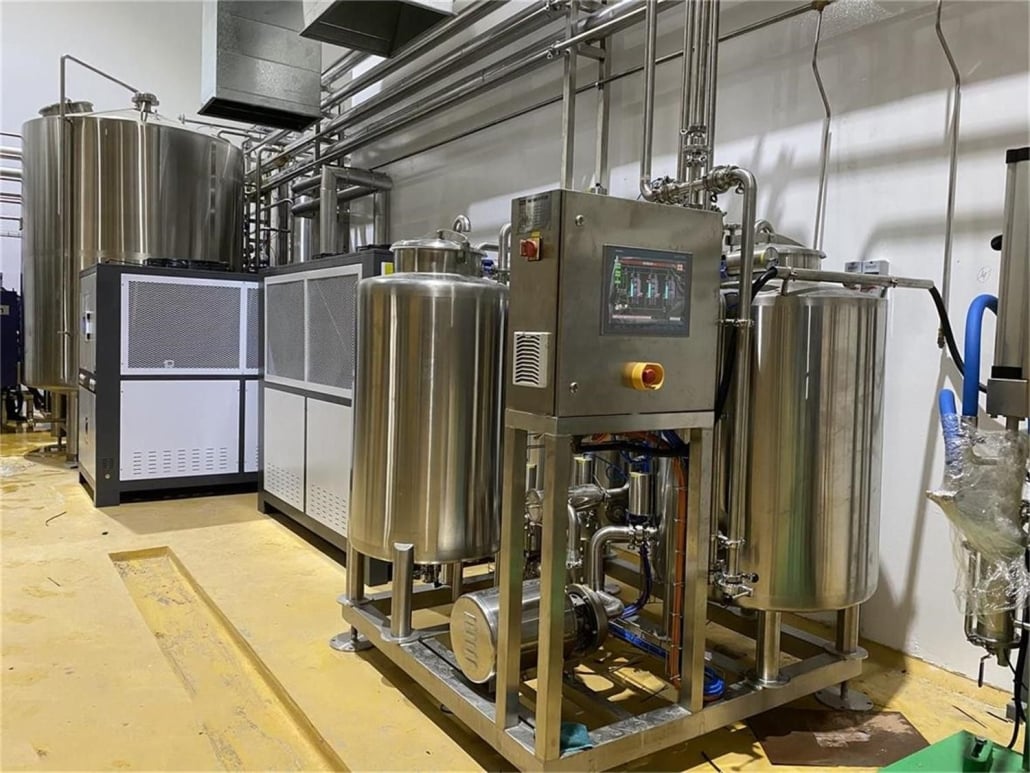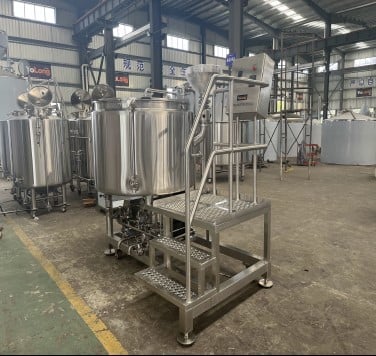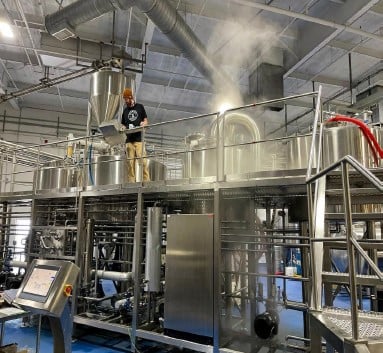Commercial Beer Equipment for Sale
Overview
Brewing beer is not just an art but also a science, and having the right equipment can make all the difference. Whether you’re a seasoned brewmaster or just starting out, investing in commercial beer equipment is a crucial step. This guide will provide an in-depth look at commercial beer equipment for sale, including an equipment guide, brewing process, and detailed comparisons to help you make an informed decision.
Equipment Guide
Types of Commercial Beer Equipment
When considering commercial beer equipment for sale, it’s essential to understand the different types available and their specific functions within the brewing process.
Brewhouse Systems
A brewhouse is the heart of any brewery, consisting of several key components: mash tun, lauter tun, brew kettle, and whirlpool. These systems vary in complexity and size, tailored to the production scale of the brewery.
Fermentation Tanks
Fermentation tanks come in various sizes and shapes, designed to allow yeast to convert sugars into alcohol and carbon dioxide. These tanks need to be temperature-controlled to ensure optimal fermentation conditions.
Bright Beer Tanks
These tanks are used for maturing, conditioning, carbonating, and filtering the beer before packaging. They ensure that the beer achieves the desired clarity and carbonation levels.
Auxiliary Equipment
Includes pumps, heat exchangers, glycol cooling systems, cleaning systems, and control panels. Each piece plays a vital role in maintaining the quality and efficiency of the brewing process.
Table: Types of Commercial Beer Equipment
| Equipment Type | Description | Primary Use |
|---|---|---|
| Brewhouse Systems | Consists of mash tun, lauter tun, brew kettle, and whirlpool | Brewing, mashing, boiling, and whirlpooling |
| Fermentation Tanks | Vessels for fermenting wort to beer | Fermentation |
| Bright Beer Tanks | Used for conditioning and carbonating beer | Maturing and carbonating |
| Auxiliary Equipment | Includes pumps, heat exchangers, glycol cooling systems, cleaning systems, and control panels | Supporting various brewing processes |

The Brewing Process
Brewing Process Overview
The brewing process involves several stages, each requiring specific equipment to ensure quality and consistency.
Mashing
The process begins with mashing, where malted grains are mixed with hot water in the mash tun to convert starches into fermentable sugars.
Lautering
In the lauter tun, the liquid wort is separated from the spent grain. This step is crucial for ensuring a clear wort.
Boiling
The wort is then boiled in the brew kettle, where hops are added for bitterness, flavor, and aroma.
Whirlpooling
After boiling, the wort is transferred to the whirlpool to remove hop particles and other solids, preparing it for fermentation.
Fermentation
The wort is cooled and transferred to fermentation tanks, where yeast is added to begin the fermentation process, converting sugars into alcohol and CO2.
Conditioning and Packaging
After fermentation, the beer is transferred to bright beer tanks for conditioning and carbonation before it is packaged into bottles, cans, or kegs.
Table: Brewing Process Steps
| Step | Description | Primary Equipment |
|---|---|---|
| Mashing | Mixing malted grains with hot water to convert starches into sugars | Mash Tun |
| Lautering | Separating liquid wort from spent grains | Lauter Tun |
| Boiling | Boiling wort and adding hops for bitterness, flavor, and aroma | Brew Kettle |
| Whirlpooling | Removing hop particles and other solids from the wort | Whirlpool |
| Fermentation | Yeast converts sugars into alcohol and CO2 | Fermentation Tanks |
| Conditioning | Maturing, carbonating, and filtering the beer before packaging | Bright Beer Tanks |
Equipment Specifications
Equipment Capacity, Space, Design, and Customization
The capacity, space requirements, design, and customization options for commercial beer equipment vary significantly based on the size and needs of the brewery.
Table: Equipment Specifications
| Specification | Details |
|---|---|
| Capacity | Ranges from small-scale (1-5 BBL) to large-scale systems (10-100+ BBL) |
| Space Requirements | Varies based on equipment size; larger systems require more space |
| Design | Customizable designs to fit specific brewery layouts and processes |
| Customization Options | Include choice of materials (stainless steel), automation level, and additional features |
Suppliers and Price Range
Finding the Right Supplier
Choosing a supplier for commercial beer equipment involves considering factors such as reputation, customer service, and price range.
Table: Suppliers and Price Range
| Supplier | Price Range | Features |
|---|---|---|
| ABC BrewTech | $50,000 – $500,000 | Customizable systems, excellent support |
| XYZ Brewing Systems | $40,000 – $450,000 | Turnkey solutions, reliable performance |
| BrewMaster Inc. | $60,000 – $600,000 | High-quality materials, advanced tech |
| CraftBrew Solutions | $30,000 – $400,000 | Affordable, scalable options |
Installation, Operation, and Maintenance
Proper installation, operation, and maintenance are crucial for the longevity and efficiency of commercial beer equipment.
Table: Installation, Operation, and Maintenance
| Aspect | Details |
|---|---|
| Installation | Professional installation recommended; involves setting up, testing, and calibrating equipment |
| Operation | Requires trained personnel; includes daily operations and monitoring |
| Maintenance | Regular cleaning, inspection, and servicing to ensure optimal performance and prevent breakdowns |
Choosing the Right Supplier
Factors to Consider
When choosing a supplier, consider factors such as experience, customer feedback, after-sales service, and warranty options.
Table: Choosing the Right Supplier
| Factor | Details |
|---|---|
| Experience | Look for suppliers with extensive experience in the brewing industry |
| Customer Feedback | Check reviews and testimonials from other breweries |
| After-Sales Service | Ensure they offer comprehensive support and service agreements |
| Warranty Options | Consider the length and coverage of the warranty provided |

Comparing Advantages and Limitations
Pros and Cons of Different Equipment
Each type of commercial beer equipment has its advantages and limitations, impacting the brewing process and final product quality.
Table: Pros and Cons of Commercial Beer Equipment
| Equipment | Advantages | Limitations |
|---|---|---|
| Brewhouse Systems | Versatile, high efficiency, customizable | High initial cost, requires space |
| Fermentation Tanks | Essential for quality control, scalable | Requires precise temperature control |
| Bright Beer Tanks | Ensures product quality, customizable | Additional cost, requires maintenance |
| Auxiliary Equipment | Enhances efficiency, supports main equipment | Maintenance-intensive, can be complex |
FAQs
| Question | Answer |
|---|---|
| What is the most important piece of equipment for brewing beer? | The brewhouse system, as it is the core of the brewing process. |
| How much space is needed for a commercial brewery? | It varies; a small-scale setup might need around 500-1,000 sq ft, while larger setups require more space. |
| Can I customize my brewing equipment? | Yes, most suppliers offer customization options to meet specific needs and preferences. |
| What is the typical price range for commercial beer equipment? | Prices can range from $30,000 to over $600,000 depending on the size and complexity of the system. |
| How often should brewing equipment be maintained? | Regular maintenance is essential, typically involving daily cleaning and periodic professional servicing. |
Conclusion
Investing in commercial beer equipment is a significant step for any brewery. By understanding the different types of equipment, the brewing process, and how to choose the right supplier, you can make an informed decision that will enhance your brewing operations and ensure the production of high-quality beer.
Share this entry
Interested in learning more about Brewing Systems including additional details and pricing information? Please use the form below to contact us!
YOLONG BREWERY EQUIPMENT FAQS
- Commercial Brewery / Craft Brewery / Microbrewery / Nanobrewery
- What is The Difference Between Craft Beer and Industrial Beer?
- The Bespoke Differences In Custom Brewing Systems
- Everything You Need to Know About Kettle Souring
- How to Choose Brewing Equipment for Your business?
- How To Choose The-Best Partner To Build Your Commercial Microbrewing System?
- Two Detection Sensors That You Need To Use In Your Brewhouse System
- Remote Control Applications in Brewing Equipment/How does it work?
- How To Clean Your Brand New Brewery Tanks?

